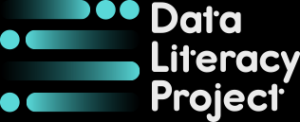
The Critical Importance of Data Literacy

(Roman Motizov/Shutterstock)
Quick: What’s the leading indicator of individual success in data and analytics? You might be tempted to say technical and statistical skills. While those are important, the top predictor is actually data literacy, including the ability to read, work with, analyze, and argue with data, according to a recent study from Qlik.
The study, which Qlik commissioned on behalf of the Data Literacy Project, concluded that the majority of companies today favor job candidates who have proven data skills ahead of those with college degrees, including data science degrees. The study found that only 21% of U.S. employers viewed a degree as its primary consideration when hiring for any position, compared to 64% who are looking for candidates who can demonstrate their data skills.
Companies are looking for data literacy across all jobs, not just for data and analytics positions, the study found. The survey, which was commissioned by Qlik’s Data Literacy project, strongly suggests that organizations that aggressively invest in data literacy programs will outperform those that don’t. In fact, according to Qlik’s Data Literacy Index, organizations with higher rates of data literacy have 3% to 5% higher values, which translates into $320 million to $534 million higher valuations per company.
“By far the majority of people don’t need to know the technical skills,” says Jordan Morrow, the global head of data literacy at Qlik and chairman of the Data Literacy Project. “It’s these other skills that matter.”
Morrow travels the world spreading the gospel of data literacy and helping leaders find ways to increase data literacy in their organizations. He finds that most organizations today say they want to be data-driven, and want to use data and analytics to improve their products and services. That’s all well and good. But all too often, he says, organizations are going about it the wrong way.
“For far too long, what I have found is that organizations are buying technology and software, thinking it’s this magic potion that will solve their data and analytical needs, only to find out that it didn’t work very well,” he tells Datanami. “They buy this software and then they say ‘We are going to force you to use it, because we’ve invested in it. Now go get me some insights.'”
While analytical software and database technology may eventually be needed, organizations tend to overlook the human element. And when they do look at human element, they tend to put too much emphasis on analytical and technical skills over more non-technical skills, such as being comfortable with data.
“The non-technical skills matter so much more than those technical skills if an organization wants to thrive with a data and analytics strategy,” Morrow says. “You’re going to have technical people on the team. You’re going to data architects, you’ll have data scientists, you’ll have data analysts. They will be there. But that’s still a small of your workforce, so let’s empower everybody in the organization to have comfort with reading, working with, analyzing, arguing with data. And let’s get this culture to thrive because then these strategies will take hold and work.”
Morrow has defined seven key elements of a data culture. First and foremost, data literacy should be encouraged to spread. People who don’t know how to talk about data — the words and the lingo — are at a disadvantage when it comes to helping the data culture spread.
“It’s like going to a foreign land and not fully being prepped where they don’t speak your language,” he says. “They’re going to hit roadblocks all over. I call speaking the language of data, or data fluency, the secret sauce of data and analytics strategy and data literacy success.”
Having strong analytical skills is the second most important element of data culture. Analytical skills is separate from technical skills, Morrow says. “It means the ability to ask a good question that you can answer with data,” he says. “That question can be tied back to a business, it can be tied back to a marketing campaign, or at the university level, it can be tied back to what courses I need to take for this or that to prepare me for the workforce, etc.”
Number three is statistical skills. “I’ll say it until I’m blue in the face: Not everybody needs to be a data scientist, but organizations do need the power of statistics,” Morrow says. “I also argue that 1% or less need to be true technical data scientists. But you still need them. If you can speak the language of data and have data fluency, an individual who doesn’t know how to do the statistics can still communicate with the person who does know how to do the statistics, so the culture works together to find answer.”
Data visualization is number four on Morrow’s list. We can’t all be top-level data scientists with Einstein-like powers of statistical deduction. But thanks to the power of data visualization, complex data can be made simpler, and mere mortals drill through data to get answers to questions.
The willingness to learn is another key element of data culture, Morrow says. We must be willing to make mistakes and move on from them. Number six on the list is mentoring others to spread knowledge and insight. Last but not least is data storytelling, which can capture the imagination and make complex data more accessible.
Changing an organizations’ culture is never easy, and Morrow argues that cultural change should not be the stated goal. Rather, he advises data leaders to shoot for more incremental change, with the goal of guiding an evolutional shift rather than making abrupt changes.
Qlik offers training on each of these seven pointers through the Data Literacy Project. Each of the 20 online courses listed on the website are free. Qlik offers additional educational resources through its Continuous Classroom and Academic Program options.
Morrow has worked with some of the biggest companies in the world on implementing a data culture, and discovered that executive buy-in is very important. “You have to have leadership buy-in that says, yes I agree that we’re going drive data literacy in the organization,” he says. “It’s not this mandatory thing, but it is an evolution of what we’re doing as an organization.”
Organizations should start small, and seek to spread data literacy to others. “You start with a small group. You then get bigger and bigger until it spans through the entire organization” he says. “But you have to have a leader. Then we find the direct people who can lead the charge to make it happen.”
Related Items:
Data Science Back to School: Accelerate Your Education
What’s Driving Data Science Hiring in 2019
Are You Data Literate? Education for the Information Economy





























